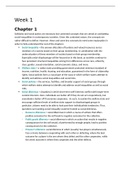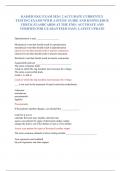Samenvatting
Boek Samenvatting - deel vd tentamenstof (Hoofdstuk 1, 2 & 3) Solidarity and Social Justice in Contemporary Societies, ISBN: 9783030937959 Solidarity and Social justice ()
- Instelling
- Universiteit Utrecht (UU)
Boek Samenvatting - deel vd tentamenstof (Hoofdstuk 1, 2 & 3) Solidarity and Social Justice in Contemporary Societies, ISBN: 9783030937959 Solidarity and Social justice () De totale tentamenstof wat betreft het boek was in studiejaar hoofdstuk 1, 2, 3, 4 & 6. Maar deze samenvatting omvat dus...
[Meer zien]













